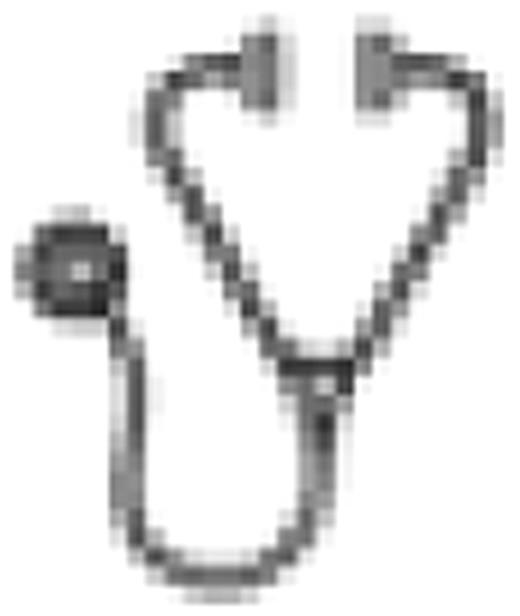Abstract
Poster Board I-615
Genome-wide, high-resolution analyses of copy number alterations (CNAs) now play an increasingly important role in identifying new genomic loci associated with leukemia biology and prognosis. The most powerful of these studies include large numbers of patients with associated clinical features and outcome data. Molecular Inversion Probes (MIPs) analyze genetic target sequences in parallel at the highest genomic resolution and can detect both gene copy number and allelic imbalance in clinical samples, and have been demonstrated to work on archived formalin-fixed paraffin-embedded (FFPE) samples as old as 20 years. In this pilot study, we report for the first time the successful interrogation of high-resolution CNAs in archived FFPE samples in childhood leukemia. We first extracted genomic DNA from FFPE bone marrow aspirate clots from 18 pediatric patients diagnosed with precursor B-cell acute lymphoblastic leukemia (pre-B ALL) diagnosed between 2006-2008 at Primary Children's Medical Center at University of Utah. DNA from paired remission samples was also extracted for each patient, again using archived FFPE bone marrow aspirate clots. Blast percentages on pre-B ALL marrow clots ranged from 39-99% (Mean 88%, Median 94%). Genomic DNA was isolated using RecoverAll” Total Nucleic Acid Isolation Kit for FFPE Tissues (Ambion®, Applied Biosystems). Clinical features and outcome data were readily available and abstracted from the medical record. The 18 patients in the FFPE cohort included: ages 2-21 years old (Median 5.5 years old), 7 females, presenting WBC 1-75 × 103/uL (Median 3.9), CNS negative disease (n=18), no reported cytogenetic abnormalities (n=8), t(12;21) [n=6], t(9;22) [n=1], and MLL rearrangement (n=1). 7 patients were designated “High Risk” by NCI-Rome Criteria and 1 patient relapsed. The MIP assay was run using the customized 330K Cancer Panel (Affymetrix®, Santa Clara, CA), which includes both cancer-specific SNPs and genome-wide coverage with a median probe distance of 4,207 basepairs (bp). Copy number was calculated by comparing leukemia samples to pooled normal control signal intensity for each probe. CNA calls were based on 5 consecutive probes with >90% call rate, standard deviation < 20%, and copy number ' 1.2 or ≥ 2.8. MIPs revealed remarkably high-quality CNA data for each of the 18 FFPE samples, including the cytogenetically “normal” patients. Both known and novel recurring CNA loci were identified in this cohort. Deletions included: 14q11.2 (n=11 [61%], 51569 bp, no known genes), 22q11.2 (n=10 [56%], 185944 bp, VPREB1), 14q32.33 (n=10 [56%], 631377 bp, no known genes), 7q34 (n=9 [50%], 292586 bp, PRSS1, TRY6, PRSS2), and 12p13.2 (n=6 [33%], 292586 bp, ETV6). Gains included: 10p15.2 (n=10 [56%], 26481 bp, PFKP), 10q26.3 (n=10 [56%], 69691 bp, MGMT), 10p11.21 (n=8 [44%], 922257 bp, FZD8, CCNY, GJD4), and 8p23.3 (n=7 [39%], 90307 bp, ARHGEF10). Interestingly, of 52 amplified segments recurring in 35% or greater of samples, all but one were located in chromosome 10, 14, 17, 18, or 21 suggesting genetic amplification hotspots. Additionally, 100% of IKZF1-deleted samples (n=2/2) compared to 37.5% of IKZF1-normal samples (n=6/16) had M3 marrows (>25% blasts) at Day 7. These same two IKZF1-deleted FFPE samples belonged to the patients with the two highest WBC values at presentation (75.3, 22.9 × 103/uL), in addition to containing two of the six highest bone marrow blast percentages at diagnosis. This is consistent with known findings that IKZF1 deletions are associated with high-risk ALL. In this pilot study of 18 patients, we have shown that archived FFPE bone marrow aspirate specimens (standard of care for all bone marrow procedures) can be used successfully for known and novel CNA analysis in childhood leukemia. We believe this is the first time that high-resolution, genome-wide CNA data from FFPE samples in any type of leukemia have been reported. This is an important development in CNA studies of hematological disease because now it is possible to investigate an unlimited number of archived FFPE childhood leukemia samples from around the world, or to explore rarer and more difficult to find specimens such as relapse or concordant identical twins.
No relevant conflicts of interest to declare.

This icon denotes an abstract that is clinically relevant.
Author notes
Asterisk with author names denotes non-ASH members.

This feature is available to Subscribers Only
Sign In or Create an Account Close Modal